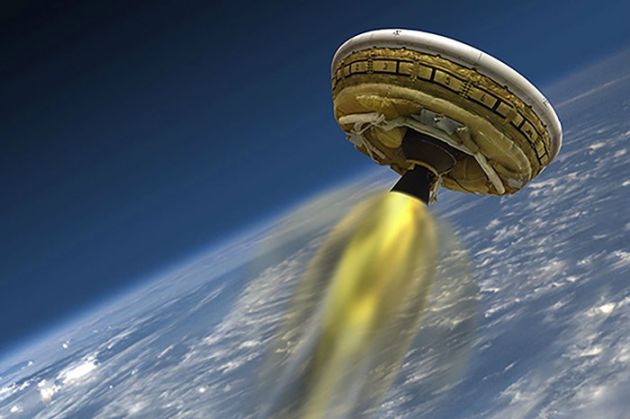NASA runs test on flying saucer but still needs work after supersonic parachute fails to open

Rumors that NASA has a UFO hidden away somewhere (probably on Area 51) has been swirling around for decades. But now it seems those rumors are finally coming true as NASA tests its very own flying saucer.
Actually, the flying saucer in question is not your standard UFO but NASA's Low Density Supersonic Decelerator (LDSD), a device shaped like a flying saucer that's attached to a huge parachute and designed to slow down spacecraft. If successful, it might hold the key to successful human missions to Mars.
According to NASA's website, the agency has to lay "the groundwork for even more complex human expeditions." This means that any spacecraft that will be used to land on Mars will become larger and heavier. Right now, the heaviest object that NASA was able to land on the red planet was the Curiosity rover which came in at a ton. But to be able to develop anything on Mars, scientists must find a way to land at least "5 metric tons for human missions."
That's where the LDSD comes into play.
The goal of the "flying saucer" test is actually to test two crucial technologies, a supersonic inflatable aerodynamic decelerator and a supersonic parachute. The decelerator was successfully deployed and it inflated. The supersonic parachute was also released successfully, but it didn't inflate.
The test was launched on Monday morning after being delayed several times. The LDSD was tied to a weather balloon until it reached an altitude of 120,000 feet above sea level. It then detached from the balloon, its thrusters ignited to provide stability and center rocket sent it upwards until the LDSD reached Mach 4.
At this point, the decelerator was deployed. The material around the LDSD inflated and increased the craft's wind resistance, slowing it down to Mach 2.5.
The supersonic parachute was deployed next and it was supposed to aid the LDSD to descend softly into the ocean. The parachute, which is over 100 feet in diameter, is the world's largest chute. Unfortunately, it did not inflate. Research done afterwards showed that the test apparently tore the material apart.
While the LDSD test flight did not give the results scientists wanted, it was still considered a success. After all, it is better for scientists to make all the mistakes now, here on Earth, instead of failing during a mission to Mars.